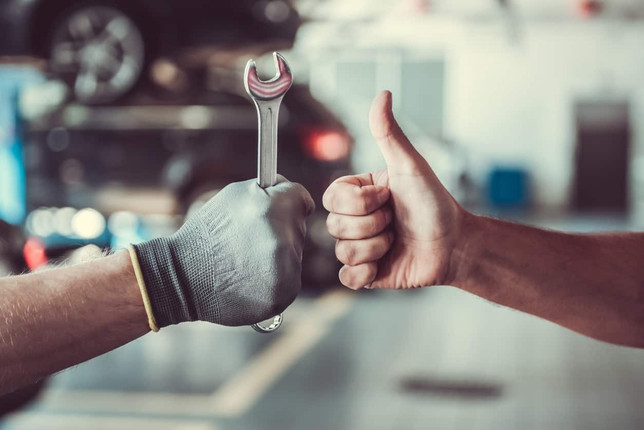Tips to Extend the Lifespan of Your Vehicle's Transmission
The transmission is one of the most critical components of a vehicle, responsible for transferring power from the engine to the wheels. It is essential to properly maintain and care for your vehicle's transmission to ensure its longevity and optimal performance. In this blog post, we will explore valuable tips and techniques to extend the lifespan of your vehicle's transmission. From regular maintenance to driving habits and fluid checks, let's delve into the world of transmission maintenance and learn how to keep your transmission in top shape.
Importance of Transmission Maintenance
Role of the Transmission: The transmission serves as the intermediary between the engine and the wheels, allowing the driver to control the vehicle's speed and power. It ensures the efficient transfer of power from the engine to the wheels, enabling smooth acceleration, deceleration, and gear changes. Neglecting transmission maintenance can lead to performance issues, breakdowns, and costly repairs.
Costly Transmission Repairs: Transmission repairs can be significantly expensive, often costing thousands of dollars. By practicing regular transmission maintenance, you can prevent major issues from arising and avoid the financial burden associated with extensive repairs or transmission replacement. Proactive maintenance is key to preserving the health of your vehicle's transmission and maximizing its lifespan.
Regular Maintenance and Inspections
Fluid Checks: Regularly checking and maintaining the transmission fluid is vital for the overall health of the transmission. The transmission fluid lubricates the various moving parts inside the transmission, cools down the components, and facilitates smooth gear shifts. Follow the manufacturer's recommendations for fluid type and intervals for fluid checks and changes. Ensure that the fluid level is within the recommended range and that the fluid is clean and free from contaminants.
Fluid Changes: Over time, transmission fluid degrades and becomes less effective in performing its tasks. Regular fluid changes are necessary to remove old, contaminated fluid and replace it with fresh fluid. Changing the transmission fluid at the recommended intervals helps maintain proper lubrication, cooling, and performance of the transmission. Be sure to use the correct type of fluid specified by the vehicle manufacturer.
Filter Replacement: The transmission filter helps prevent debris and contaminants from entering the transmission. It is essential to replace the filter at the recommended intervals to ensure optimal filtration and prevent clogs that can restrict fluid flow. A clogged filter can lead to poor transmission performance and even damage to internal components.
Seals and Gaskets: Inspecting and maintaining the seals and gaskets in your transmission is crucial to prevent fluid leaks. Over time, these seals and gaskets may deteriorate, leading to leaks that can result in low fluid levels and potential transmission damage. Regularly inspect and replace worn-out seals and gaskets to maintain a proper seal and prevent leaks.
Cooling System: The cooling system plays a vital role in keeping the transmission at an optimal operating temperature. Overheating can cause damage to the transmission and its components. Ensure that the cooling system is functioning correctly, and the radiator and transmission cooler are clean and free from debris. Regularly flush and refill the coolant according to the manufacturer's recommendations.
Driving Habits and Techniques
Smooth Acceleration and Deceleration: Aggressive driving habits, such as rapid acceleration and abrupt braking, can put unnecessary stress on the transmission. Smoothly accelerate and decelerate to reduce wear and tear on the transmission components. Gradually increase speed when starting from a stop and allow sufficient time for the transmission to shift gears smoothly.
Proper Gear Selection: Engaging the appropriate gear for your driving conditions is crucial for transmission health. Avoid shifting from "drive" to "reverse" or vice versa while the vehicle is still moving. This practice can cause significant stress on the transmission and lead to premature wear and damage. Always come to a complete stop before changing gears.
Avoid Overloading: Excessive weight or towing loads beyond the vehicle's capacity can strain the transmission. Check the vehicle's maximum towing and payload capacities and adhere to these limits. Overloading can cause the transmission to overheat and lead to accelerated wear and potential failure.
Warm-Up Period: Give your vehicle's transmission a few moments to warm up before driving, especially in cold weather. This allows the transmission fluid to circulate and reach the optimal operating temperature. Gentle driving during the warm-up period helps the fluid to flow effectively and provides better lubrication and protection for the transmission.
Professional Maintenance and Servicing
Transmission Inspections: Regular inspections by a qualified technician can identify potential issues before they escalate into major problems. A professional inspection allows for early detection of worn-out components, leaks, or any other signs of transmission trouble. Schedule regular check-ups to ensure that your transmission is in good condition and to address any concerns promptly.
Transmission Flush: Periodic transmission flushes, performed by a professional, help remove old, degraded fluid and contaminants that accumulate over time. Flushing the transmission ensures a thorough cleaning of the internal components and promotes optimal fluid performance. Consult with a trusted mechanic to determine the appropriate interval for a transmission flush based on your driving habits and the manufacturer's recommendations.
Repairs and Replacements: In the event of transmission issues or failures, seek professional assistance from a reputable transmission specialist. Attempting DIY repairs on complex transmission systems can cause further damage and void warranties. A skilled technician can accurately diagnose transmission problems and recommend the necessary repairs or replacements. Trusting an expert ensures that the job is done correctly and helps extend the lifespan of your transmission.
Conclusion
Maintaining your vehicle's transmission is crucial for its long-term health and performance. Regular maintenance, fluid checks, and changes, along with practicing good driving habits, can significantly extend the lifespan of your transmission and prevent costly repairs. Remember to follow the manufacturer's recommendations, seek professional assistance when needed, and be proactive in addressing any signs of transmission trouble. By prioritizing transmission maintenance, you can enjoy a smooth and reliable driving experience while maximizing the lifespan of your vehicle's transmission.

